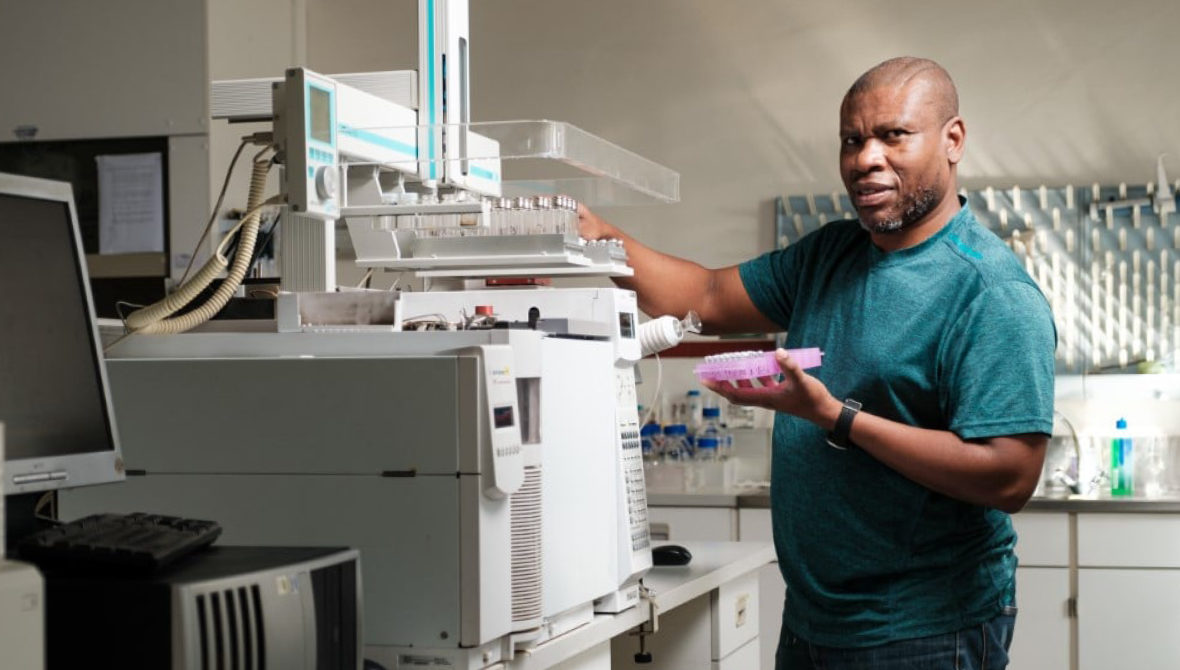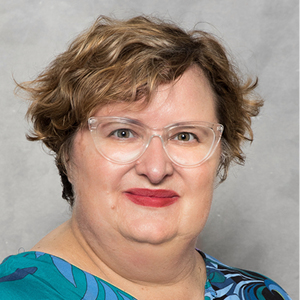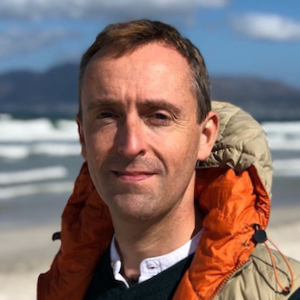A Call to Action for Investing in Higher Ed in Africa — and the Researchers, Innovation, and Youth It Supports


We are entering a golden age of philanthropic giving. As public budgets face ever greater strain, philanthropy appears to be stepping into the breach. Harvard Kennedy School’s Global Philanthropy Report published in 2018 describes the number of philanthropic institutions as having “sky-rocketed” since 2000, with the lion’s share of these institutions marking their establishment in the last 25 years (Johnson, p. 14). The report identified more than 260,000 philanthropic foundations in 39 countries. Of those, the fixed assets of 150,000 foundations exceeded $1.5 trillion in value. The authors of the Harvard report note that this is a conservative figure. To put it into some context, that is equivalent to the gross domestic product of South Korea, the twelfth largest economy in the world (World Bank, 2021).
Learn more in this profile by Elbie Els.
(Photographer: Stefan Els)
You might think a South African university such as our institution, Stellenbosch, should be well placed to leverage this philanthropic bonanza. However, there are a number of issues that make accessing that international philanthropy challenging.
Philanthropy has long been a mainstay of U.S. universities’ revenue mix and, in recent years, European universities have stepped up their efforts. Headline philanthropic flows crisscross the Atlantic. In 2019, American Stephen Schwarzman made the largest ever donation to Oxford University (£150 million) (Jack), following on from the $200 million given to Harvard Medical School by Sir Len Blavatnik, a dual citizen of both the U.S. and the U.K., just one year earlier (The Harvard Gazette).
The scale of such giving should be applauded, but sitting at the bottom of Africa it is hard not to observe a predictable and somewhat depressing pattern of higher education philanthropy, much of which appears locked in the global North. Even the most progressive of U.S. institutions, such as the Bill & Melinda Gates Foundation, appears to have an inbuilt bias. According to one analysis of the foundation’s university funding, 90% of its giving between 2014-18 went to North American and European universities and 4% went to African universities (UniversityPhilanthropy.com, 2020a).
It appears to be much the same case among European funders. A review of giving by the U.K.’s most prominent 200 philanthropists showed at least £620 million has been channeled to non-U.K. universities over the past six years, with U.S. universities receiving 59% of this giving, more than all received by the higher education institutions in the rest of the world combined (UniversityPhilanthropy.com, 2020b).
The scale of U.S. university philanthropy speaks to a range of factors — quality of research, successful alumni programs, family ties, culture, and language. But it is hard not to be struck by the blindingly obvious disconnect, given we know that education is the preferred area of private philanthropy and Africa is the biggest regional beneficiary of giving (OECD, 2018).
“African universities’ poor exposure to philanthropists [is] reinforced by the limited resources with which to promote their cause in the globalised and highly competitive field that characterises higher education today.”
A vicious cycle appears to be evident, with African universities’ poor exposure to philanthropists reinforced by the limited resources with which to promote their cause in the globalised and highly competitive field that characterises higher education today. It is hardly surprising few African universities are visible with some rare exceptions that include Makerere University in Uganda, Strathmore University in Kenya, Cheikh Anta Diop University in Senegal, and the Universities of Cape Town and Witwatersrand in South Africa.
Many donors give to a university, inspired by the noble value of advancing knowledge. Self-evidently the Harvard Medical School leads in a range of research areas, and a substantial donation can directly advance scientific understanding and contribute to treatments and cures. However, there is a risk that the pursuit of knowledge is framed through a Western lens. Wittingly or not, those with access to funds, agendas, and infrastructure can determine what warrants research.
It is a common complaint among African scientists that research into issues of global — and therefore African — impact is led by institutions in North America and Europe. Take the recent grant award of $30 million by the U.S. government’s President’s Malaria Initiative (PMI) to PATH, aimed at supporting African countries in the improved use of data for decision-making in malaria control and elimination (2021). PATH convened for the project a consortium of seven institutions in the U.S., the U.K., and Australia, including Harvard, Imperial College, M.I.T., and the University of California, San Francisco. Not one partner was in Africa. The award caused an outcry among African scientists and researchers (Erondu et al., 2021).
“Lack of access to funding and inequitable partnerships both disadvantages African scientists and means the output has limited relevance for African health problems.”
If African scientists are included in the research, their role is relegated to data-gathers or recipients of “capacity strengthening.” Lack of access to funding and inequitable partnerships both disadvantages African scientists and means the output has limited relevance for African health problems.
Take the example of HIV science. While progress has been remarkable in HIV treatments in the past 20 years, most of the studies on which treatment guidelines are based have a preponderance to HIV-1 subtype B which largely occurs in the U.S. and Europe. Yet, this subtype accounts for only 12% of worldwide infections and is almost nonexistent in many low to middle-income countries — notably in Africa — where close to 90% of the infection is found (Ayitewala et al., 2020). It should be said that the majority of HIV treatments are effective for all strains, but the point remains no less valid.
In recognition of the need to address the research — and associated funding — imbalance, a major project was kick-started in 2007 which became known as the Higher Education Research and Advocacy Network in Africa (HERANA) (van Schalkwyk et al., 2021). A 10-year program emerged that brought together a group of funders including the Ford Foundation, the Carnegie Corporation, and the Norwegian Agency for Development Cooperation (Norad) with the goal of strengthening capacity in higher education research across Africa. The group focused their efforts on eight universities, collecting data on the research performance of the participating universities. The project ended with the formation of the African Research Universities Alliance (ARUA), a network that today comprises 16 research universities (Cloete, 2018).
It was successful to a point, writes Prof. Nico Cloete of Stellenbosch University’s Centre for Research on Evaluation, Science and Technology (CREST). One of the issues he identifies is that African donor funding tends to target projects rather than institutions, despite the rhetorical emphasis on capacity building among the donor community (2018). Despite these enduring limitations, change is evident.
Cloete and his colleagues at CREST have been tracking the scientific output from universities in Africa and there is an indisputable increase — a trend indicative of the change taking place in higher education institutions in Africa. Their study shows that Africa’s contribution to global scientific knowledge over time had increased from 1.5% to 3.5% in the last 19 years (van Schalkwyk et al, 2021). Cloete considers this was a significant achievement given the contribution to global knowledge output from China and other Asian countries had increased substantially in the same period. Cloete’s research highlighted strong collaborations between African and European institutions, and between Africa and the U.K., but that there was no evidence of increasing intra-African research collaboration.
The truth is there is little funding available for intra-African research which means the risk remains that collaboration continues to be dominated by western financing. And when it comes to the financial settlement, research partnerships with well-established western universities often disproportionately favor the latter. Moreover, rarely is international investment forthcoming in African university capacity building — with some notable exceptions by some international development organizations, notably Scandinavian agencies such as Norad.
It feels all the more egregious that in the time of COVID-19, the evidence suggests that the big international philanthropists are redirecting their efforts towards university funding closer to home, just at the time African universities are feeling harder pressed than ever, and the prospect of African-led research stalling (UniversityPhilanthropy.com, 2021).
“Continuing existing university philanthropic funding patterns, skewed as they are to the global north, will only reinforce wider global economic, societal (including gender), and technological imbalances.”
Why should U.S. funders care, you may well ask? The truth is, the current reflection on racial equity in the U.S. is a microcosm of the debate for greater global equity — in which race sits center stage. Continuing existing university philanthropic funding patterns, skewed as they are to the global north, will only reinforce wider global economic, societal (including gender), and technological imbalances. That ill serves all of us.
So here are four measures that U.S. funders could adopt:
The last point U.S.-based philanthropists should heed is the pace at which Africa’s booming tech sector is moving. According to AfriLabs, a network of African innovation centers, the expansion of the continent’s tech hubs is fuelled in large part (31%) through philanthropy (2019). Corporate sponsors are the second biggest funders (21%) while private investors account for 15% of funding. Some of that funding appears to be coming from next gen philanthropists who are emerging as more light-footed than traditional funders in identifying the talent and the enabling environments that feed such innovation (Ajokpauwu, n.d.).
Africa’s youth population is set to increase by 42% over the next decade (United Nations, 2015). Africa’s educational institutions will need to keep pace with demand for local jobs and global connectivity. The U.N.’s sustainable development goals (SDGs) and other indicators are unlikely to be met if the vast majority of educational-related philanthropic flows remain concentrated between Europe and North America.
The onus may well be on African universities to make their research and teaching capabilities better known to the outside world, and we have our part to play. By the same token, the focus of donors should shift towards building expertise within the specific contexts needed to address humanity’s next challenges. That these contexts are increasingly to be found within Africa’s extensive network of universities should come as no surprise.


AfriLabs & Briter Bridges. (2019, October). Building a conducive setting for innovators to thrive. https://www.afrilabs.com/wp-content/uploads/2019/11/AfriLabs-Innovation-Ecosystem-Report.pdf
Ajokpauwu, J. (n.d.). AfriLabs and Mozilla sign partnership. https://www.afrilabs.com/afrilabs-and-mozilla-sign-partnership-3/
Ayitewala, A., Kyeyune, F., Ainembabazi, P., Nabulime, E., Drago Kato, C., & Nankya, I. (2020, January 31). Comparison of HIV drug resistance profiles across HIV-1 subtypes A and D for patients receiving a tenofovir-based and zidovudine-based first line regimens in Uganda. AIDS Research and Therapy 17(2). https://doi.org/10.1186/s12981-020-0258-7
Cloete, N., & van Schalkwyk, F. (2018, March 30). HERANA – 10 years of growing research universities. University World News. https://www.universityworldnews.com/post.php?story=20180328135155625
Erondu, N. A., Aniebo, I., Kyobutungi, C., Midega, J., Okiro, E., & Okumu, F. (2021, April 15). Open letter to international funders of science and development in Africa. Nature Medicine. https://www.nature.com/articles/s41591-021-01307-8
The Harvard Gazette. (2019, October 21). The speed of discovery. https://news.harvard.edu/gazette/story/2019/10/philanthropist-len-blavatnik-returns-to-harvard-medical-school/
Jack, A. (2019, June 18). Blackstone boss hands Oxford record £150m gift. Financial Times. https://www.ft.com/content/b0d0bc42-91da-11e9-b7ea-60e35ef678d2
Johnson, P. D. (2018, April). Global philanthropy report: Perspectives on the global foundation sector. Hauser Institute for Civil Society at Harvard University’s John F. Kennedy School of Government. https://cpl.hks.harvard.edu/files/cpl/files/global_philanthropy_report_final_april_2018.pdf
Norad. (2020, December 18). University partnerships receive funding for 60 projects through the NORHED programme. https://www.norad.no/en/front/about-norad/news/2020/university-partnerships-receive-funding-for-60-projects-through-the-norhed-programme2/
OECD. (2018, May). Private philanthropy for development. The Development Dimension. OECD Publishing. https://www.oecd-ilibrary.org/development/private-philanthropy-for-development_9789264085190-en
PATH. (2021, January 26). PATH and the U.S. President’s Malaria Initiative launch a $30M global project to advance the use of new and existing tools to fight malaria and save lives. https://www.path.org/media-center/path-announces-pmi-inform-malaria-operational-research-project/
United Nations. (2015, May). Population facts. https://www.un.org/esa/socdev/documents/youth/fact-sheets/YouthPOP.pdf
UniversityPhilanthropy.com. (2020a, March). An analysis of university giving by the Bill& Melinda Gates Foundation. The Cape Partnership. https://www.universityphilanthropy.com/bill-and-melinda-gates-foundation-funding
UniversityPhilanthropy.com. (2020b, October). Funding to non-UK universities by the UK’s top 200 philanthropists. The Cape Partnership. https://www.universityphilanthropy.com/top-200-philanthropists
UniversityPhilanthropy.com. (2021, April). Funding by the Silicon Valley Community Foundation. The Cape Partnership. https://www.universityphilanthropy.com/siliconvalley
van Schalkwyk, F., Blanckenberg, J., Cloete, N, Maassen, P., & Mouton, J. (2021, Janaury 14). Science output up, but data-driven investment needed. University World News Africa Edition. https://www.universityworldnews.com/post.php?story=20210112144237619
World Bank. (2021, February 12). Gross domestic product 2019. World Development Indicators database. https://databank.worldbank.org/data/download/GDP.pdf